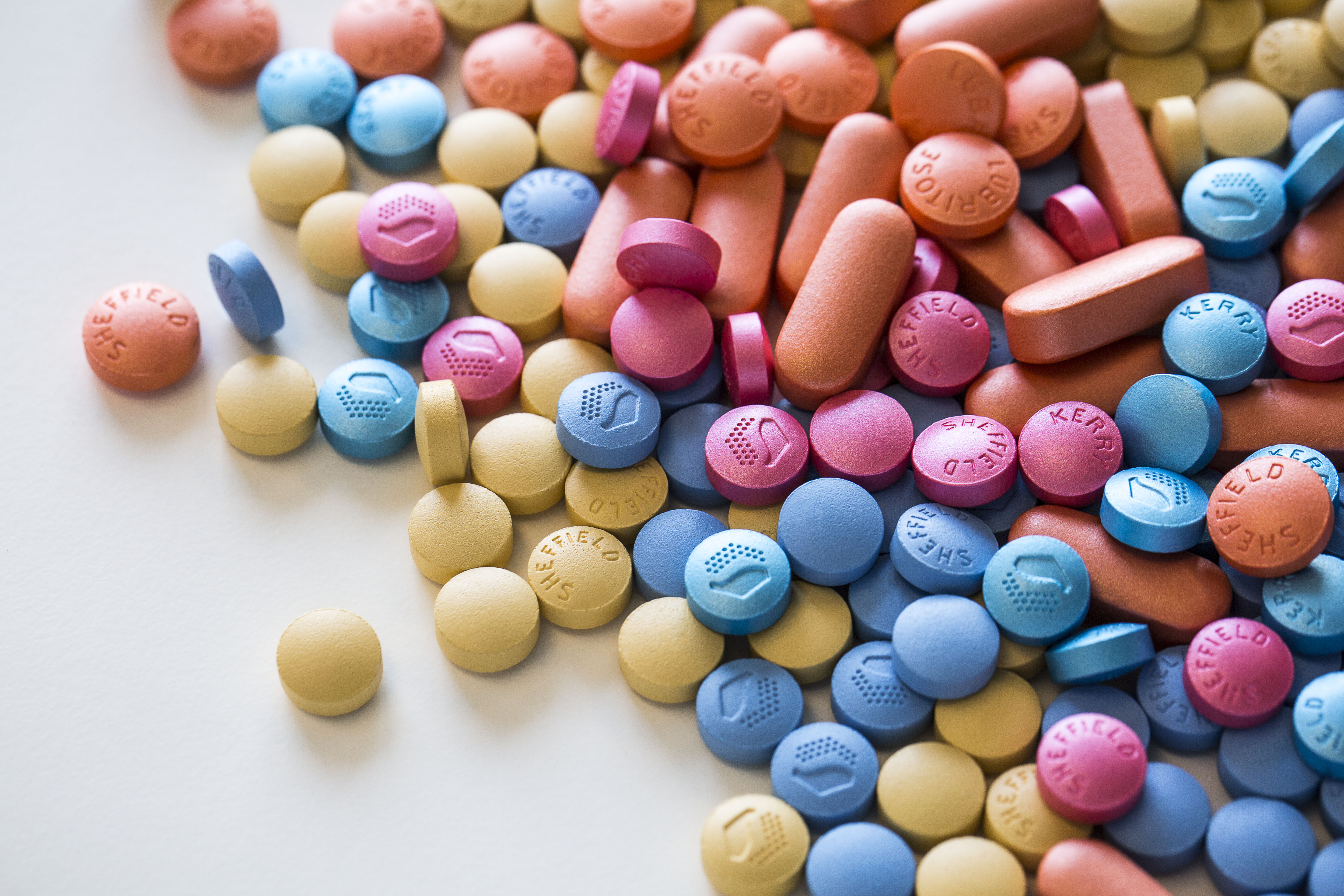An introduction to pharmaceutical film coatings

A wide variety of pharmaceutical products, including pellets, granules, capsules, powders, and crystals are often film coated. In this present article, we will concentrate on the film-coating of tablets.
The procedure of coating tablets is a complex process that results in the forming of a thin layer around the tablet. This layer is in the range of 20 to 200 μm in thickness, or around 1 to 9% of the initial weight of the tablet. As a reference, a human hair is usually around 100 μm thick, much like the typical thickness of an immediate release coating.
What are the main reasons we coat tablets?
Aesthetic and protective coatings which allow for immediate release of the API
- to increase the shelf life of the tablets as the coating can protect tablets from light, moisture and oxidation
- to improve product appearance and identification. Film coatings may be colored and are an excellent branding, trademarking, and identification (patient safety) tool
- to improve the ease of swallowing by making the tablets smoother
- to improve the strength of the tablet – the coating increases the mechanical resistance of the tablets
- to improve the taste and mask odors associated with APIs, which are often bitter
Controlled release of drug (often referred to as functional coatings):
- making the release of the drug in various GI sites depending on the pH. Example: the enteric or gastro-resistant coating which protects the API of the acidic media of the stomach or protects the stomach from the irritation of the API. an HPMC based subcoating is justified for both isolation and cost reasons before the gastroenteric layer
- prolonged or sustained release may be achieved with special coatings
Some pharmaceutical companies produce their own coating formulas, but many others instead purchase fully formulated powders for reasons of cost-saving, efficiency improvement, and product consistency.
Continue reading on coating compositions, application of coatings in our introduction article

